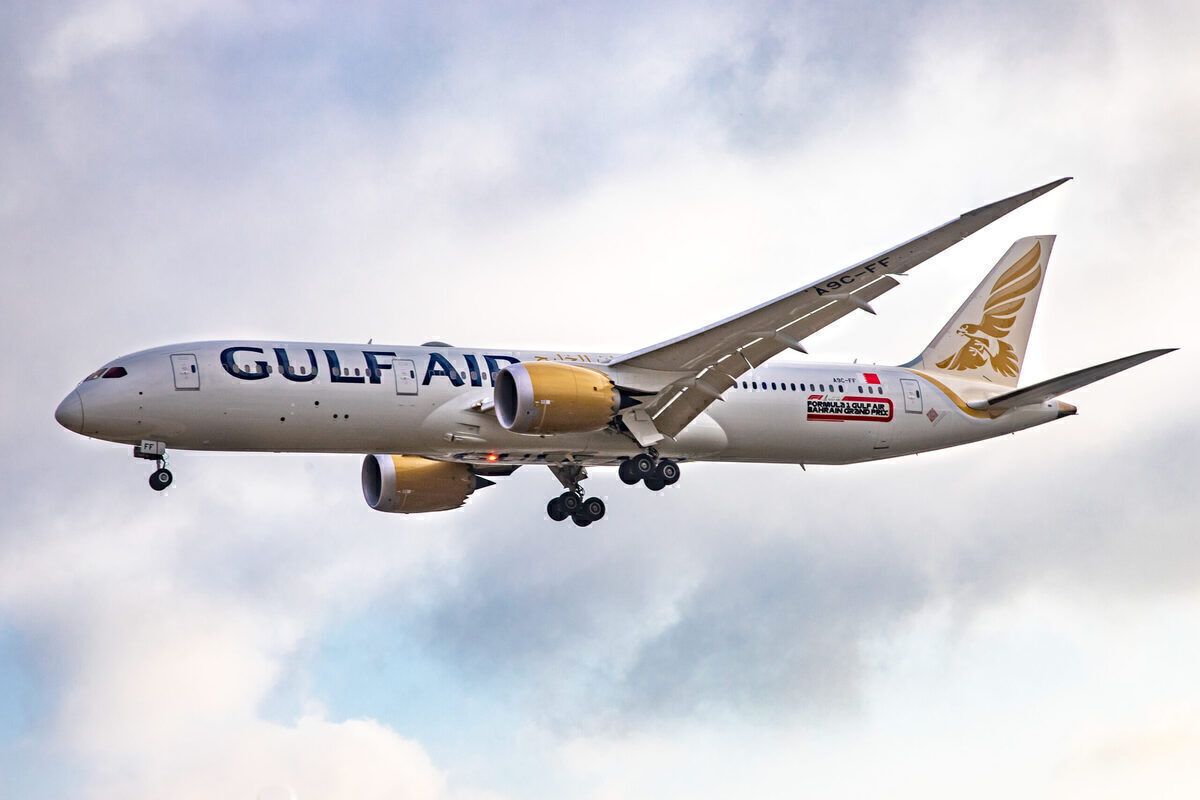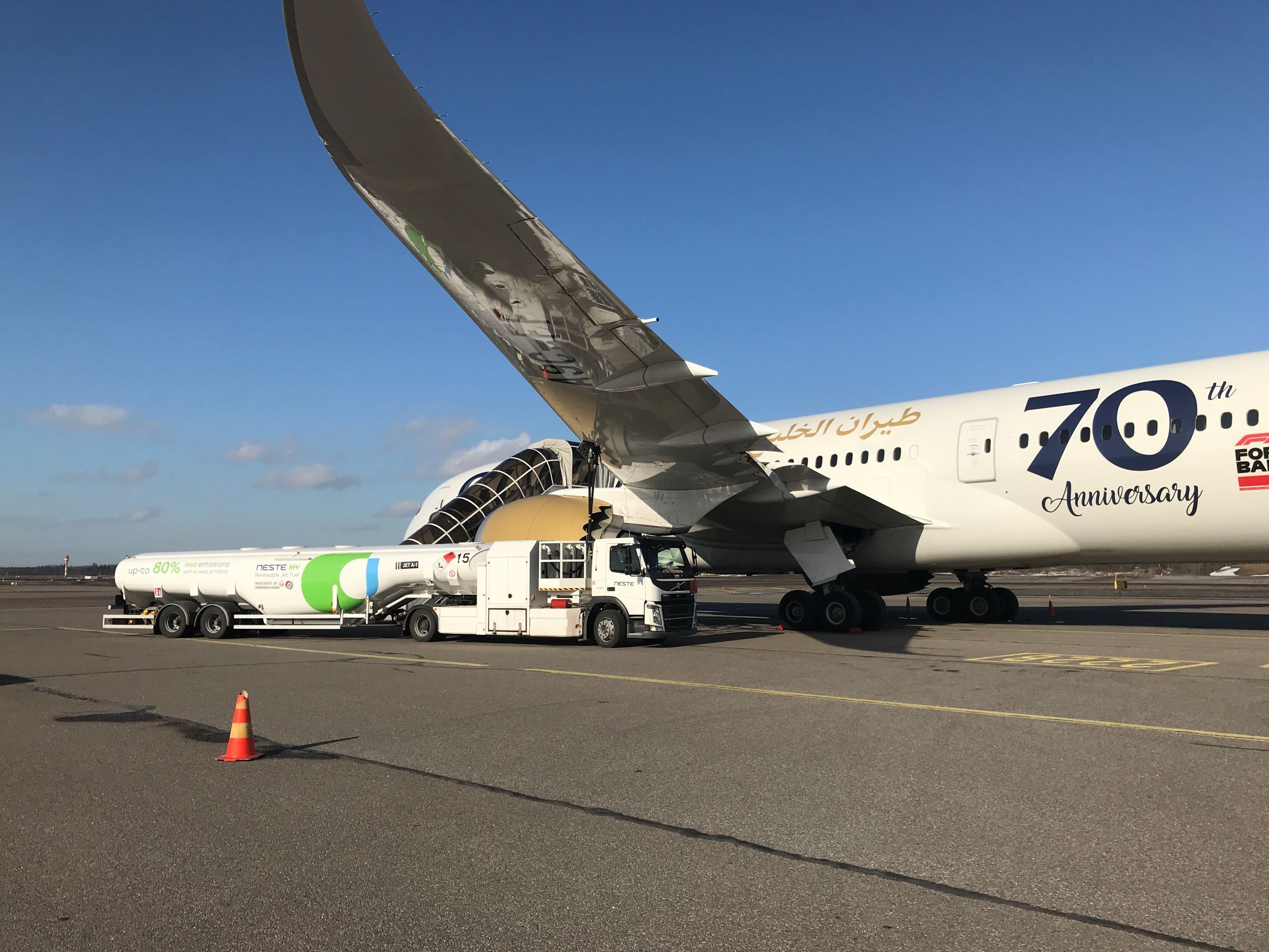Late last month, Gulf Air operated its first transcontinental lower emissions flight with a Boeing 787-9. The Bahrain-based carrier operated the flight using Sustainable Aviation Fuel provided by Neste on a flight from Helsinki to Bahrain. The flight took place on March 26th, 2021.
Sustainable Aviation Fuels (SAFs) are being trialed by airlines worldwide as they look to reduce their environmental impact. However, thanks to the low supply of such fuels, they are currently costly to make, meaning that they are largely unpopular to airlines. As such, some airlines, like the Lufthansa Group, have resorted to asking passengers to pay for them voluntarily.
Gulf Air's first transcontinental SAF flight
Last month Gulf Air operated its first transcontinental flight using SAFs. On March 26th, A9C-FF, a two-year-old Boeing 787-9 flew from Bahrain to London. This is a usual route for Gulf Air. However, something not normal happened on the flight back.
Stay informed: Sign up for our daily and weekly aviation news digests.
Rather than returning to Bahrain, the aircraft instead flew from London to Helsinki. Having arrived in Helsinki at 14:04, Neste refueled the aircraft. Instead of straight aviation fuel, Neste's SAFs were introduced to the fuel system.
Two days later the aircraft went on to fly over the Bahrain F1 race with SAFs, suggesting it may have tankered fuel over for the flight. According to the airline, this fuel provides an 80% reduction in greenhouse emissions compared to fossil fuels. You can read all about Sustainable Aviation Fuels here.
An inspection too?
According to Gulf Air, while the Boeing 787-9 was on the ground, a SAFA inspection was undertaken. According to EASA, a SAFA inspection is used to ensure that third country operators meet EASA's requirements. EASA states that such examinations can either be completed when an aircraft is suspected of non-compliance with EASA regulations or on a random spot-check basis.
EASA's authorized inspectors use a checklist with 53 items on when completing a SAFA inspection. This includes aircraft documents and manuals, flight crew licenses, the aircraft's apparent condition, and the presence and condition of mandatory cabin safety equipment. However, inspectors cannot delay an aircraft's departure except for safety reasons, meaning that not all points may be checked each time an aircraft is stopped.
Gulf Air didn't point out whether the SAFA inspection was targeted or random. However, the airline did reveal that the inspection was completed successfully with no findings.
Off to Bahrain
Having been fueled with SAFs, and passed its SAFA inspection, A9C-FF departed from Helsinki at 16:00, according to RadarBox.com. The aircraft flew for five hours and six minutes before touching down at Bahrain International Airport at 22:07. Cruising between 39,000 and 41,000 feet, the aircraft passed over Estonia, Russia, Turkey, and Iraq en route to its home.
Commenting on the flight, Captain Waleed AlAlawi, acting CEO of Gulf Air, said,
"This lower emission flight marks the beginning of our journey into our future strategy to explore the use of Sustainable Aviation Fuel in our aircraft and standing by our commitment to lower our carbon emissions... We are exploring potentials and possibilities of the use of sustainable aviation fuel for a better tomorrow for the generations to come and for our planet."
What do you make of Gulf Air's first transcontinental lower emissions flight? Let us know what you think and why in the comments!



